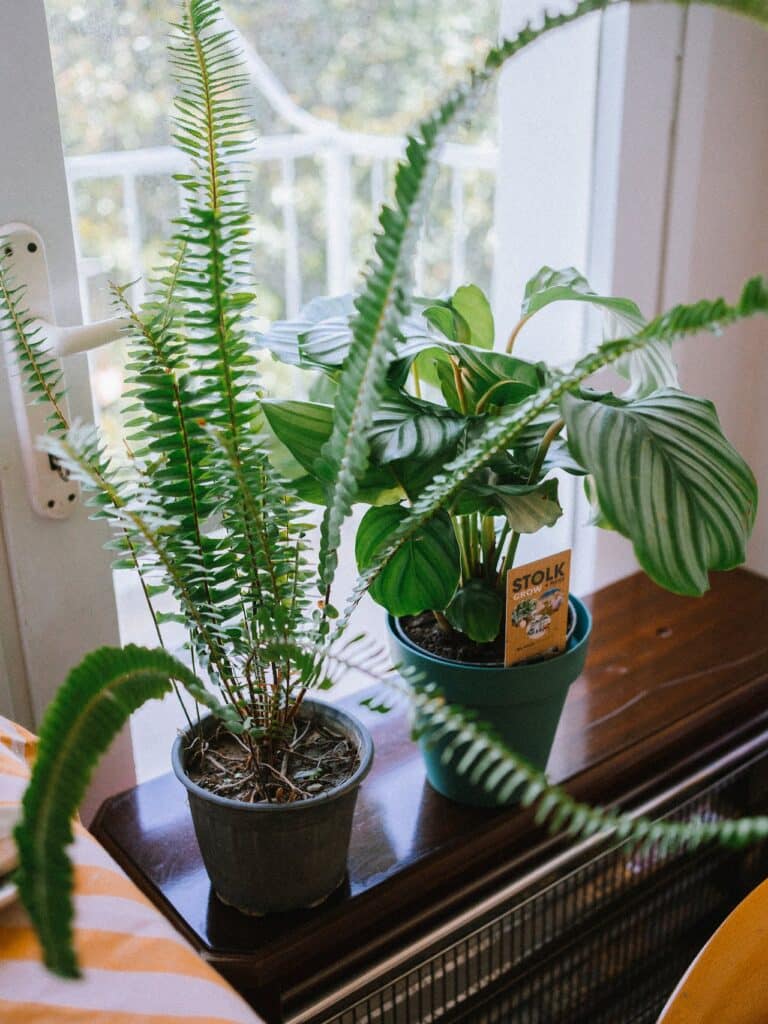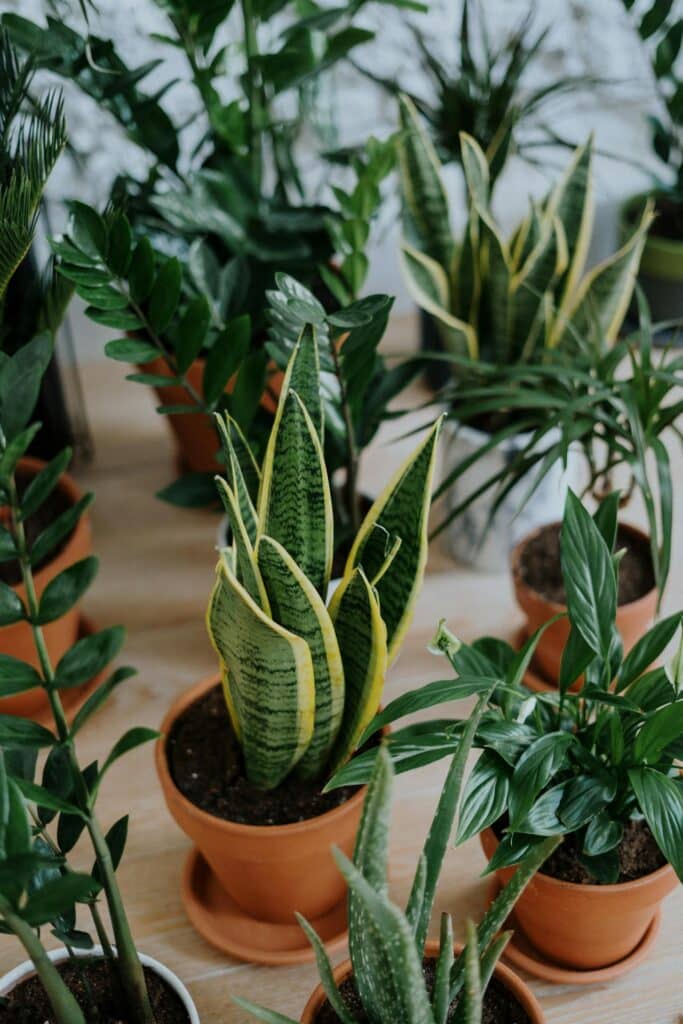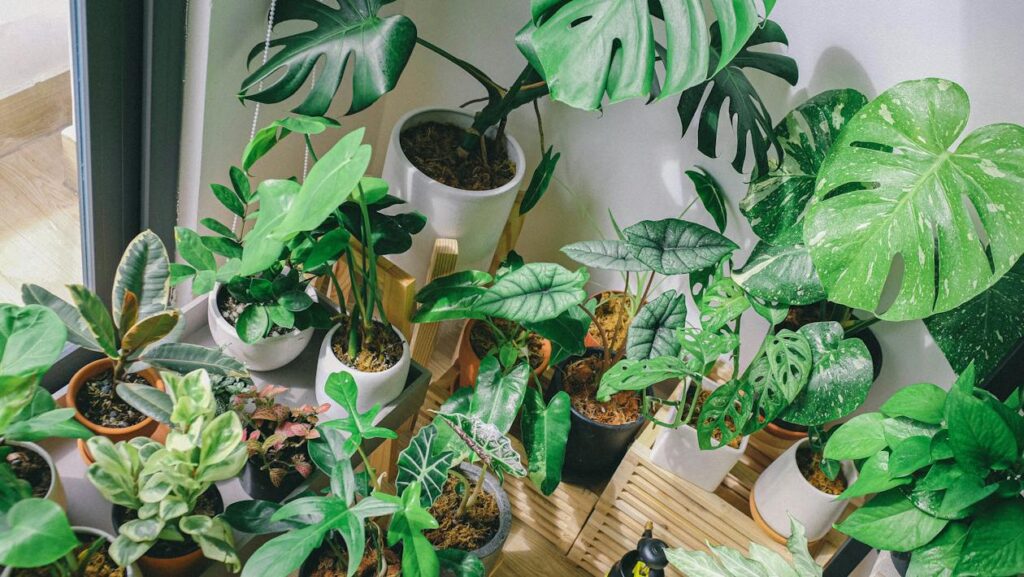Indoor plants are not just aesthetically pleasing but are also believed to have numerous benefits. However, One common misconception revolves around whether indoor plants can increase humidity. While it may seem logical to assume that plants release moisture into the air, the impact on humidity levels is less significant than you might think. It is essential to understand the role of indoor plants in maintaining humidity levels and how they contribute to a healthier indoor environment. So, let’s explore the fascinating realm of indoor plants and the truth behind their influence on humidity.

Understanding Humidity and Its Role Indoors
Humidity refers to the amount of water vapor present in the air. It plays a crucial role in maintaining a comfortable and healthy indoor environment. When we talk about humidity in the context of indoor spaces, it is important to understand both its sources and effects.
Defining humidity
Humidity is typically measured using two metrics: relative humidity and absolute humidity. Relative humidity represents the amount of moisture in the air compared to the maximum amount it can hold at a specific temperature, expressed as a percentage. Absolute humidity, on the other hand, refers to the actual amount of water vapor present in the air.
Sources of humidity inside a home
Humidity inside a home can come from various sources. Cooking, showering, and doing laundry all generate moisture that contributes to indoor humidity levels. Additionally, the occupants of a home release moisture through respiration and perspiration. Even the simple act of breathing can release significant amounts of water vapor into the air.
Effects of humidity on indoor environments
Indoor humidity levels can have a significant impact on both the comfort and health of individuals living in a space. High humidity can create a stuffy and uncomfortable environment, leading to feelings of stickiness and excessive perspiration. It can also contribute to mold and mildew growth, which can cause respiratory issues and damage to the structure of the home.
Conversely, low humidity levels can lead to dry skin, irritated eyes, and respiratory problems. It can also cause issues with wooden furniture and flooring, as they need a certain level of moisture to maintain their integrity.
The Basics of Indoor Plants and Their Impact on the Environment
Indoor plants are a popular addition to home decor due to their aesthetic appeal and potential benefits for the environment. Understanding the types of indoor plants, their natural habitats, and the potential upsides and downsides of having them is essential when considering their impact on indoor humidity levels.
Different types of indoor plants and their natural habitats
Indoor plants come in various types, each with its own unique characteristics and requirements. Some common examples include succulents, which thrive in arid environments, and tropical plants, which prefer warm and humid conditions. Understanding the natural habitats of these plants can provide insights into their moisture requirements and potential impact on indoor humidity levels.
Benefits of having indoor plants
Indoor plants offer several benefits beyond just aesthetics. They can enhance air quality by absorbing carbon dioxide and releasing oxygen through the process of photosynthesis. Additionally, certain plants have the ability to remove harmful pollutants from the air, contributing to a healthier living environment. Studies have also shown that having indoor plants can improve mood, reduce stress levels, and boost productivity.
Potential downsides of indoor plants
While indoor plants offer numerous benefits, there are potential downsides to consider as well. Some plants may require specific environmental conditions, including humidity, to thrive. If these conditions are not met, the plants may struggle or even die. Additionally, overwatering plants can lead to excessive humidity, potentially causing issues such as mold growth or damage to furniture and electronics.

The Science Behind Plants and Humidity
Understanding the science behind how indoor plants contribute to humidity levels is key to comprehending their impact on indoor environments. The process of transpiration in plants plays a significant role in regulating humidity levels indoors.
The process of transpiration in plants
Transpiration is the process through which plants release water vapor into the air. It occurs when plants absorb water from the soil through their roots and transport it to their leaves. The water then exits the leaves through tiny pores called stomata, where it evaporates into the surrounding environment as water vapor. This process helps to cool the plant and also contributes to the overall humidity of the surrounding air.
How indoor plants contribute to humidity
Indoor plants contribute to humidity levels by releasing water vapor through transpiration. The moisture released by plants can increase the humidity in the immediate vicinity, especially in enclosed spaces. The more plants present, the higher the potential increase in humidity levels.
Environmental factors affecting a plant’s rate of transpiration
Several environmental factors can impact a plant’s rate of transpiration. These include temperature, light intensity, humidity levels, and air movement. Higher temperatures and light intensity generally lead to increased transpiration rates, while higher humidity levels can reduce the rate at which plants release water vapor. Air movement, such as from fans or drafts, can also affect the rate of transpiration.
Research Studies on Indoor Plants and Humidity
Numerous research studies have been conducted to explore the relationship between indoor plants and humidity levels. Reviewing existing research can provide valuable insights into the impact of indoor plants on indoor environments and help identify any gaps or inconsistencies in current knowledge.
Review of existing research studies
Several studies have investigated the impact of indoor plants on humidity levels. These studies have explored the effect of different plant species, varying plant densities, and different environmental conditions on indoor humidity. By analyzing these studies, we can gain a deeper understanding of the factors that influence humidity levels in the presence of indoor plants.
Summary of findings from credible sources
Overall, existing research indicates that indoor plants can have a modest but measurable impact on indoor humidity levels. The extent of this impact depends on factors such as the number and types of plants, the size and ventilation of the space, and the environmental conditions. While some studies report significant increases in humidity, others suggest more marginal effects.
Gaps and inconsistencies in current research
Despite the existing studies, there are still some gaps and inconsistencies in our understanding of the relationship between indoor plants and humidity. More research is needed to determine the ideal plant density and species for optimal humidity regulation. Additionally, the influence of factors like pot size, watering frequency, and plant health on transpiration rates and subsequent humidity levels requires further investigation.

Impact of Indoor Plants on Humidity Levels
While research suggests that indoor plants can influence humidity levels, it is important to consider the magnitude of this impact, the factors affecting it, and whether the type of plant matters.
Substantial increase or marginal
The impact of indoor plants on humidity levels is typically more marginal than substantial. The extent of the increase in humidity depends on various factors, as discussed earlier. The presence of a few indoor plants may not dramatically alter the overall humidity of a well-ventilated space. However, in an enclosed area with a dense concentration of plants, the effect on humidity levels may be more noticeable.
Factors affecting the effect of indoor plants on humidity
Several factors can affect the impact of indoor plants on humidity levels. These include the number and size of plants, the size and ventilation of the space, and the environmental conditions. Incorporating a diverse range of plant species with varying transpiration rates can also impact the overall humidity regulation.
Does the type of plant matter
The type of plant can also affect its impact on humidity levels. Plants with higher transpiration rates, such as those with large leaves or high water requirements, are more likely to contribute to increased humidity. Additionally, plants adapted to humid environments, such as tropical species, may have a more significant effect on humidity levels compared to plants that prefer drier conditions.
Practical Implications of Indoor Plants’ Effect on Humidity
Understanding the practical implications of indoor plants’ effect on humidity is crucial when considering their presence in indoor environments. While increased humidity can have benefits, it is important to manage it effectively to avoid any potential issues.
Benefits of increased humidity for health and wellbeing
Increased humidity can have several benefits for health and wellbeing. It can help alleviate dry skin and respiratory symptoms, particularly during dry seasons or in regions with low humidity. Higher humidity levels can also provide relief for individuals with allergies or asthma, as it can reduce the circulation of airborne allergens and irritants.
Potential issues of increased humidity
While increased humidity can be beneficial, there are potential issues to be aware of. High humidity levels can promote the growth of mold, mildew, and dust mites, which can cause or exacerbate respiratory issues and allergies. Excessive humidity can also lead to condensation on windows, walls, and furniture, potentially causing damage or promoting the growth of mold.
Managing humidity levels
To manage humidity levels effectively, it is important to strike a balance. Monitoring indoor humidity levels using a hygrometer can help ensure they remain within a comfortable range, typically between 30% and 50%. Proper ventilation, such as opening windows or using exhaust fans, can help control excessive humidity. Additionally, using dehumidifiers or air conditioners can reduce excess moisture in the air when necessary.
Ways to Control Humidity Levels When Having Indoor Plants
If you choose to have indoor plants and want to better regulate humidity levels, there are several strategies you can employ. These methods range from using dehumidifiers to selecting plants with lower transpiration rates.
Use of dehumidifiers
Dehumidifiers are appliances designed to extract moisture from the air, helping to lower humidity levels. They work by drawing in humid air, cooling it to condense the moisture, and then reheating the air before releasing it back into the room. Dehumidifiers can be particularly useful in areas with high humidity or when excessive moisture is a recurring issue.
Choosing plants with lower transpiration rates
To minimize the impact of indoor plants on humidity levels, selecting plants with lower transpiration rates can be beneficial. Cacti and succulents are examples of plants that typically have lower water requirements and, therefore, lower transpiration rates. Including these types of plants in your indoor plant collection can help regulate humidity more effectively.
Environmental controls to adjust humidity
Another option to control humidity levels is to adjust environmental conditions. Incorporating effective ventilation systems, such as fans or air purifiers, can help circulate air and regulate humidity. Additionally, using air conditioning or heating systems equipped with humidity controls can provide further control over indoor humidity levels.
Expert Opinions on Indoor Plants and Humidity
Considering the viewpoints of experts from various fields can provide valuable insights into the relationship between indoor plants and humidity levels.
Insights from botanists and environmental scientists
Botanists and environmental scientists recognize the impact of indoor plants on humidity levels. They emphasize the importance of considering the specific needs of plants, including their transpiration rates, when integrating them into indoor environments. They also highlight the potential benefits of indoor plants for overall indoor air quality and wellbeing.
Opinions from interior designers and architects
Interior designers and architects often incorporate indoor plants for aesthetic appeal and the potential positive impact on the indoor environment. They recommend selecting plants that harmonize with the overall design concept while considering their practical implications, such as watering requirements and their effect on humidity levels.
Advice from health and wellness experts
Health and wellness experts acknowledge the potential benefits of indoor plants for improving indoor air quality and reducing stress levels. They recommend considering individual sensitivities and preferences when selecting and caring for indoor plants. They also stress the importance of properly managing humidity levels to promote a healthy and comfortable living environment.
Case Studies: Real-Life Scenarios of Indoor Plants and Humidity
Examining real-life scenarios can provide concrete examples of how indoor plants can impact humidity levels in different settings.
Examples of homes with indoor plants
In many homes, indoor plants are successfully incorporated as decor without significantly impacting humidity levels. By choosing plants suited to the specific environment and effectively managing humidity through ventilation and monitoring, individuals can enjoy the benefits of indoor plants without experiencing excessive humidity.
Impact of indoor plants on workplace environments
In office settings, the presence of indoor plants can contribute to improved air quality and employee morale. Studies have shown that employees working in spaces with indoor plants report higher levels of wellbeing and productivity. However, it is crucial to consider the size of the space, the number of plants, and the ventilation system to ensure humidity levels remain within a comfortable range.
Influence of indoor plants in schools or libraries
Indoor plants can also have a positive impact on educational and recreational environments such as schools or libraries. They can create a calming and inviting atmosphere, making these spaces more conducive to learning and studying. Proper selection of plants that require minimal maintenance and monitoring of humidity levels can help ensure a healthy and comfortable environment for students and visitors.
Final Thoughts: Weighing the Pros and Cons of Indoor Plants for Humidity Regulation
In conclusion, indoor plants can have a modest but measurable impact on humidity levels in indoor environments. Understanding the sources of humidity, the science behind how plants contribute to humidity, and the practical implications is essential when considering indoor plants for humidity regulation.
While indoor plants offer numerous benefits, such as improved air quality and enhanced wellbeing, they also require careful consideration to avoid potential drawbacks. Managing humidity levels through proper ventilation, monitoring, and using dehumidifiers can help strike a balance between the positive impact of indoor plants and maintaining a comfortable indoor environment.
Ultimately, deciding to have indoor plants for humidity regulation depends on individual needs and circumstances. Considering available space, personal preferences, and willingness to manage humidity levels can help determine whether indoor plants are a suitable addition to an indoor environment.
Maintaining a broader perspective on the use of indoor plants, as part of a holistic approach to indoor environmental quality is also important. Factors such as lighting, temperature, and indoor air pollutants alongside humidity levels can create a healthy and sustainable indoor living environment.



